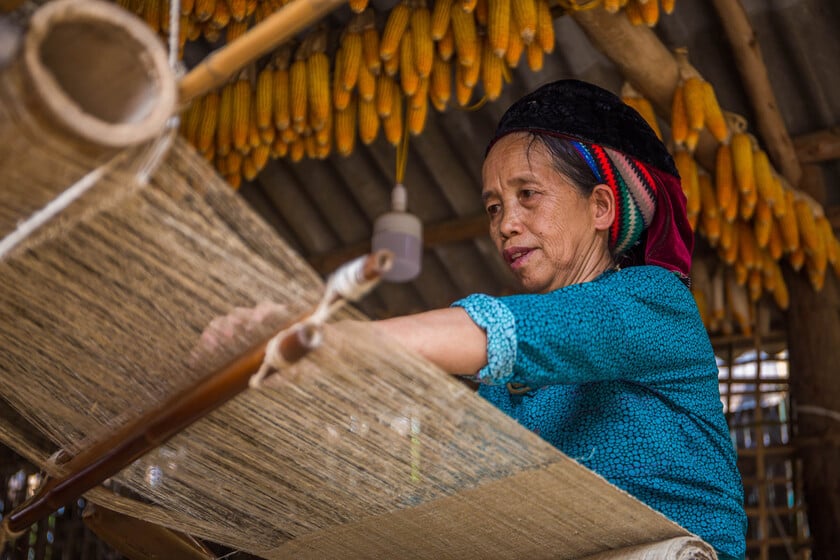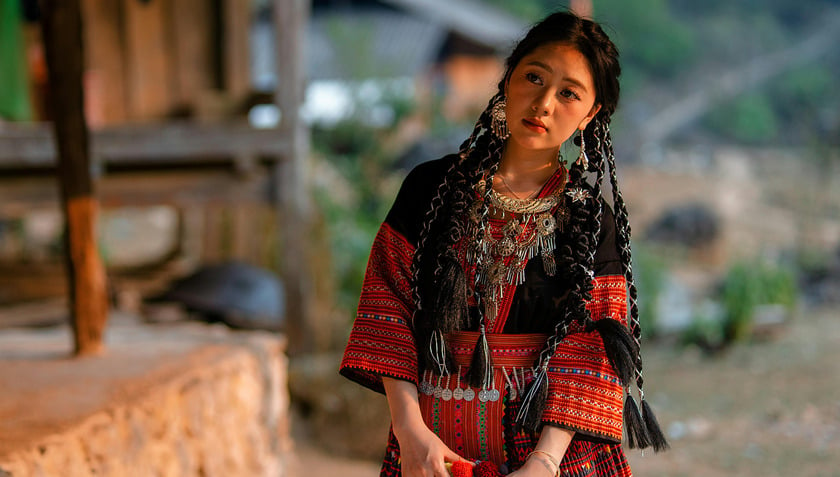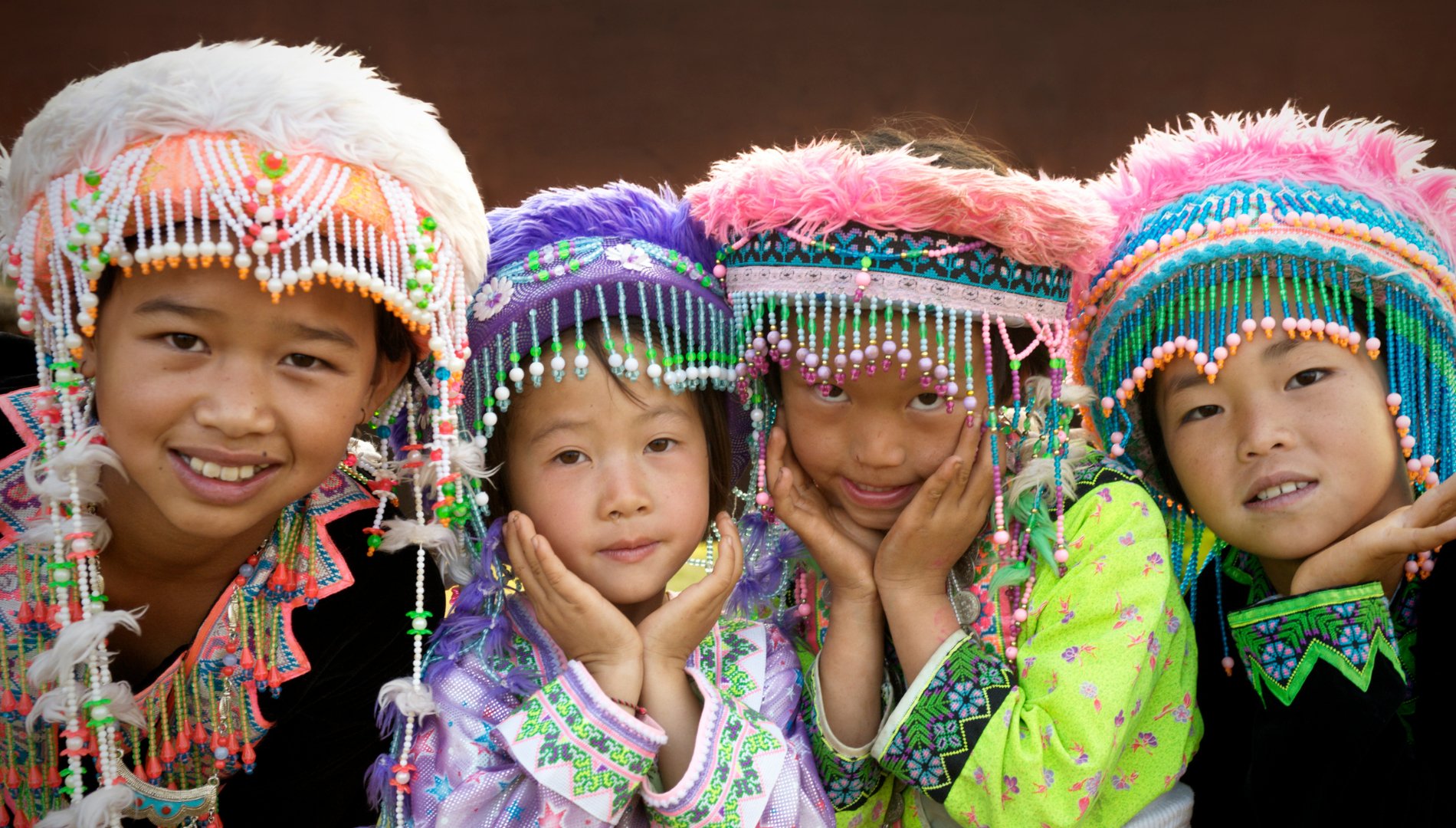Lying proudly at the northernmost point of the S-shaped strip of land, Dong Van Stone Plateau stands tall between the earth and sky, spreading over 4 mountainous districts including Quan Ba, Yen Minh, Dong Van and Meo Vac of Ha Giang province. With a total natural area of up to 2,354km², this place is not only a unique geological wonder recognized by UNESCO as a Global Geopark, but also the cradle of a colorful, rich and unique culture.
Here, more than 250,000 people from 17 ethnic groups have chosen this place as their homeland. Among them, the Mong people dominate with about 70% of the population, mainly the White Mong group. For generations, the Mong ancestors have come to the Stone Plateau, persistently reclaiming, settling, living in the middle of what is known as the "stone desert", the life of the Mong people is still constantly colorful, rich in rhythm. That is clearly shown through each costume, spiritual belief, unique customs, architectural works bearing their own mark, vibrant folk art forms and deep understanding of nature on this rocky land.

The linen weaving profession of the Mong people has great significance to the traditional culture of the nation, and is a vivid demonstration of the diligence and hard work of the people.
Flax and the eternal cultural beauty of Mong women
For generations, on the Dong Van Stone Plateau, the Mong people have passed on to each other a proud saying: “Where there is flax, there are Mong people”. Flax is not simply a source of material for sewing clothes or making household items. Moreover, flax has penetrated deeply into the life, beliefs, and spirituality, becoming a unique cultural and spiritual symbol of the Mong people in general and the Mong people on the Dong Van Stone Plateau in particular.

Flax is a cultural symbol of the Mong people.
The Mong people living on the Dong Van Stone Plateau are always proud that they possess two traditional occupations that make other ethnic communities admire: growing flax for weaving and unique blacksmithing. Flax, a member of the hemp family, is called “Chaozmangx” in the Mong language. This plant is usually planted around the end of February and the beginning of March of the lunar calendar and harvested at the end of June and the beginning of July of the lunar calendar every year, marking a cycle of hard work and hope.
When mentioning Mong women, the first and most prominent impression is the linen dress with its characteristic lines, colors and patterns that cannot be confused with the costumes of any other ethnic group. Mong women are closely associated with the profession of growing flax and weaving, and bundles of flax thread seem to be their inseparable item. This is not only a job that demonstrates dexterity and diligence, but also an important measure to evaluate the talent, ethics, qualities and business style of Mong women. That is why Mong people often say: "A beautiful girl who does not know how to make linen is ugly, a pretty girl who does not know how to hold a needle is bad".

People here still preserve the traditional linen weaving profession with natural materials and manual processes.
All year round, day after day, Mong women work hard to spin flax and weave cloth. This diligence has seeped into their blood and flesh, creating the habit of working hard, diligently and with skillful hands. The profession of growing flax and weaving cloth has contributed significantly to creating the typical character of Mong women. Therefore, to evaluate the qualities and character of a woman, Mong people often use the technique of growing flax and weaving cloth as a standard measure.
The ideal woman is considered to be a beauty who is proficient in every step from growing flax, weaving to embroidery. On the contrary, a woman is considered clumsy and incompetent if she is not proficient in these skills. Just by looking at her flax roll, one can guess her inner personality. If the flax roll is smooth, shiny, and neat, it is that of a capable, careful, and skillful woman. On the contrary, if the flax roll is messy, it is often that of a careless, lazy, and clumsy woman.

Weaving linen also shows dexterity and diligence and becomes one of the criteria to evaluate a woman's talent and virtue.
To create a finished linen fabric, Mong women must go through an extremely elaborate process, requiring meticulousness and absolute patience. The first step is stripping the flax fibers. This work requires dexterity and care to avoid breaking the fibers. After stripping, the flax fibers are put into a mortar and pounded tirelessly until they become soft, smooth, loose and no longer dry and stiff.
Next is the fiber joining stage - this is considered the most difficult and time-consuming stage. Mong women must strip each small flax fiber by hand and then meticulously join them at equal distances and lengths, root to root, tip to tip, then roll them into smooth rolls of fiber. After connecting them into large flax rolls, they spin, soften, stretch the flax fiber and finally put it on the loom. After more than 40 stages and countless drops of sweat, a new piece of raw linen fabric gradually takes shape. Not stopping there, the linen fabric must also be soaked in ash water until it becomes shiny white to be completed.

Must go through many different stages to complete a product
The finished linen is used to make beautiful dresses, and the beauty of the dress is also a measure of the skillful hands and rich soul of the Mong women. From a young age, girls are guided by their mothers to weave linen, learn to embroider, and paint beeswax on dresses. Without a certain pattern, with careful observation, rich imagination and skillful hands, Mong women constantly create unique shapes and patterns, paint beeswax, and mix colors of embroidery thread to create their own unique beautiful dresses.

The Mong people believe that linen helps connect descendants with their ancestors.
Patterns are the most important element that creates the beauty of Mong people's costumes. However, these patterns are very rustic, originating from ancient stories and poems about the origin of the nation, majestic natural landscapes, familiar crops, livestock and agricultural products in life. The patterns are often seen in the form of horizontal grids with borders in the form of squares, crosses, diamonds, triangles, circles, single spirals, double spirals, sawtooth, curves, wavy lines... Inside are five-pointed, six-pointed, eight-pointed stars, pumpkin flowers, spider webs, snails, goat horns... Mong people believe that beautiful patterns will help invite gods to the family, bestow good luck and dispel evil. These patterns often have bright colors, especially red, creating a warm feeling for the wearer when walking in the deep forests, high mountains, abysses in the cold climate of the Stone Plateau.

"To have a beautiful piece of fabric, the craftsman must love the job, be persistent and skillful"
It is the flax plant and the way of making flax that has forged skillful hands, created a patient and resilient personality, and nurtured a rich, sensitive soul of Mong women. When setting foot on the Dong Van Stone Plateau, visitors can easily see everywhere the image of Mong women, carrying a bamboo stick on their backs, walking tirelessly with a roll of flax in their hands, stripping and connecting them as they go. The Mong people's linen on the Dong Van Stone Plateau is one of the precious products of this land, made entirely by hand by the skillful hands of women.
For the Mong people, linen is not just a common clothing material. Linen is an heirloom, clearly reflecting the cultural traditions, history, beliefs, personality and wealth of the Mong people. Above all, linen has become a unique spiritual and cultural symbol, an inseparable part of the identity and life of the Mong people on the Dong Van Stone Plateau.



































